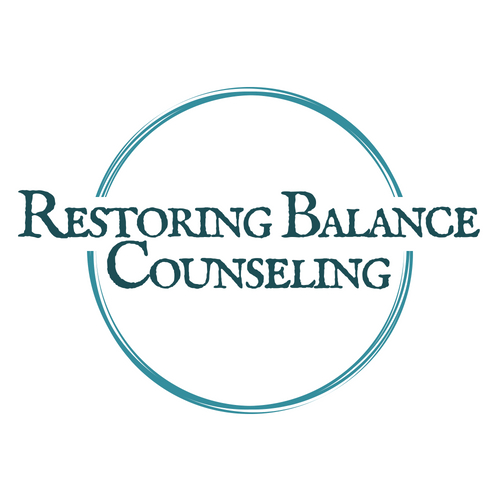In recent weeks, especially with the holidays bringing families together, boundary-setting has been coming up often, in and outside the therapy office. I notice that for many, “boundaries,” as a concept, seems to be confusing and not very clear as to what is meant by them. This can lead to relationship difficulty, because boundaries play out in so many facets of life. You might be asking yourself whether your own boundaries are adequate…. Try asking yourself the following questions…
Do you ever feel like you invest more than you receive in relationships with partners, family, friends, or even strangers?
Do you feel resentful, or that you are being taken advantage of in relationships?
Do you feel a little annoyed most of the time, or find yourself feeling as if you are mistreated?
Do you worry about the disapproval from others if you were to choose to say no or do what’s right for you?
Do you often feel compelled to “fix things” for those who are close to you (emotionally, or otherwise)?
Do you worry others won’t think you’re a good friend, partner, son, daughter, etc, if you don’t do what they are asking from you?
Do you fear that setting a limit would lead to argument or confrontation?
Do you say “yes” when you mean “no” out of habit, or just to avoid unpleasant interactions.
Do you go out of your way to ensure that other people’s comforts, wants, and needs are satisfied at the expense of your own?
While most people occasionally struggle with boundary setting, if these questions sound a bit too familiar, it might help to give your boundaries some re-working.
What Are Boundaries?
Boundaries are a limit between you and another person. Simply put, it’s about knowing where you end and others begin. Knowing what’s yours and what’s not. It’s about acknowledging that every adult is responsible for themselves. Having a functioning boundary means taking responsibility for your own actions and emotions, and definitely NOT taking responsibility for the actions and emotions of others. We have boundaries and we can regulate how impenetrable they are (meaning what we let in and out) when it comes to physical, mental and emotional aspects of ourselves and others.
Maintaining boundaries is like being the gatekeeper of your life in order to keep yourself emotionally safe and well. Imagine you are a house, with a front and back door. If you keep your front door unlocked and back door open all the time, anyone is free to walk in, do as they please, and stay as long as they want. On the other hand, if you keep the doors shut and locked with the curtains drawn, you end up isolated, and miss out on connecting with others. Many go from one of these extremes to the other and this causes a lot of emotional instability in relationships. We know that the healthiest type of boundary is one that is appropriately and purposefully open to some people, in some situations, some of the time, and closed to others, at other times. How well we communicate these boundaries can either protect or hurt relationships.
How Do You Set and Keep Boundaries?
The first step tends to be to create time to get to know yourself, and practice feeling worthy of setting and maintaining boundaries. Often when we allow our boundaries to be crossed, we feel as though we are being generous, maybe because we feel (or have been taught) it’s the only way to be a “good person” or the only way to have worth or value in our lives. It’s important to recognize that being “worthy” does not come from our achievements or generosity toward others, but because like every person, we simply are! Reinforce that you are worthy by being kind and compassionate toward yourself and taking good care of your emotional health. You may feel as though a good relationship means you take care of others at your own expense, and you hope they will take care of you in the same way in return, but this only creates boundary chaos. Instead,you can take care of you first. You may instinctively think of this as selfish, but it isn’t. By meeting your own needs, you respect yourself and the other by taking responsibility for your own well-being.
The second step is about defining your limits. In other words, in each situation, ask yourself what you are responsible for and what is outside your scope. If your partner wants you to do something, ask yourself, “would I like to invest in my relationship in this specific way?” If yes, then you can do it within your boundary. Then ask yourself, “does this come at the expense of my well-being?” “Will my resentment grow if I do it?” If yes to either, there is a good chance this is outside your healthy boundary. Give yourself the power to own the choices you make, and avoid doing anything that you will come to resent. Make choices that you feel are right for you (not because you feel like you have to, fear the consequences, or think “that’s what it takes to be a good person”), but because you feel confident with the choice no matter what the outcome may be.
The third step is to practice assertiveness! First noticing when your boundaries are being tested, then, communicating your opinion and decision firmly, but respectfully. For example, you might feel guilty because you don’t visit your family as often as they’d like. Make a personal choice about how often you would like to visit, and express your choice firmly to them. You are not responsible for how they feel about your choice. At work you might go above and beyond your job requirements at the expense of your own time with friends and family, which can lead you to burnout. Despite your fears (“what if I lose my job?”), you can start by setting limits on how often you work and communicating it assertively (saying “I am not available to work on the weekend”).
To summarize, when boundaries are blurry or loose, we do things we don’t want to do, often at the expense of our well-being. This leads to frustration within ourselves and can damage relationships with others. Being responsible for minding our own emotions and actions rather than those of others is essential to keeping our relationships (and ourselves!) healthy.
If you’re still struggling with how to set and maintain your boundaries and limits, feel free to contact me please contact me at (717) 288-5064 / gregghammond@restoringbalancelancaster.com and schedule an appointment today. Together, we can develop boundaries that can keep you feeling emotionally and physically safe.








